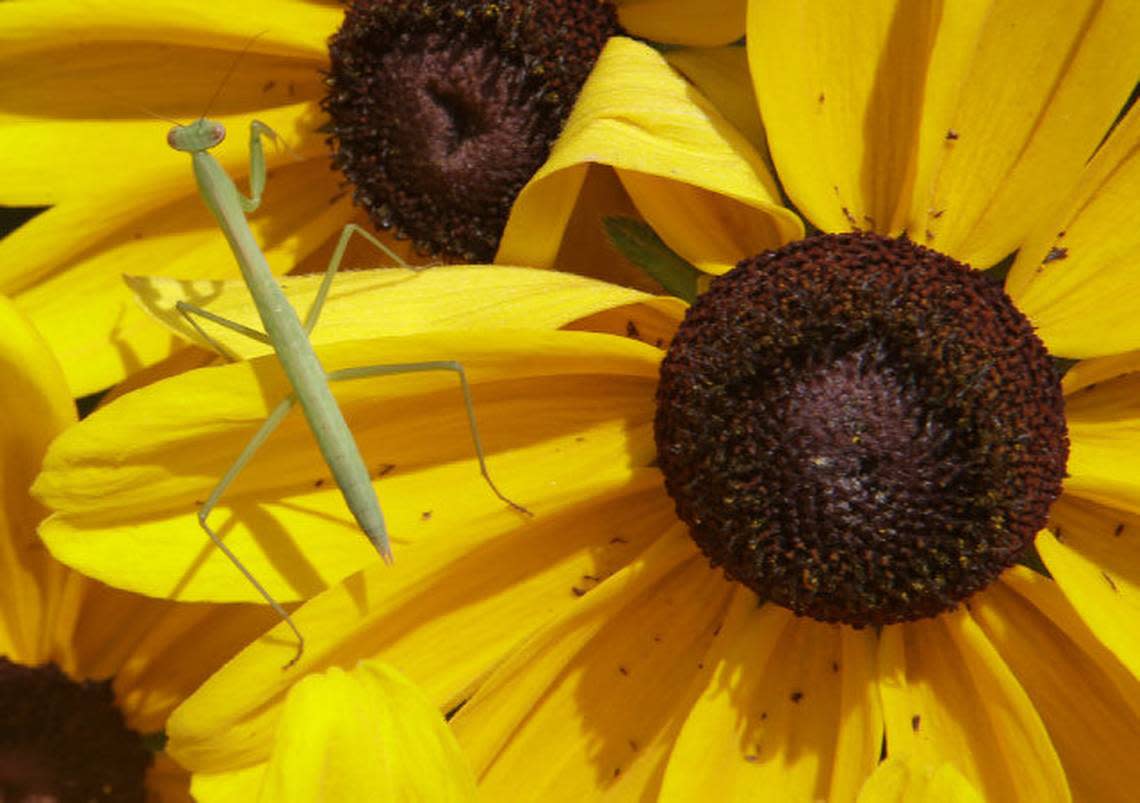The SC state insect is a cannibal, a friend to gardeners and sometimes kept as a pet
South Carolina, as well as any other state, is known to have a number of state icons, from birds to butterflies and fish. The Palmetto state also has an insect.
That’s right.
South Carolina has an official state insect.
The Carolina Mantid was designated as the state’s official insect in 1988 by Act Number 591.

This insect was selected for its position as being native to the state, being a beneficial insect that is easily recognizable throughout South Carolina, its ability to symbolize the importance of the natural science of entomology and its special role in all forms of agriculture in helping to control harmful insects. And it provides a perfect specimen of living science for the children of the state, according to the Act.
The Carolina Mantid (Stagmomantis carolina) is smaller for the mantid species, growing to about 2-2.5 inches long.
They are the most common type of mantid in the U.S., despite its name.
The male mantid is equipped with long wings for flight and is light and active; whereas, the female has short wings, cannot fly, and is big and heavy. Both typically appear as a mottled gray color or occasionally greenish-yellow in appearance, detailed Clemson University’s Home & Garden Information Center.
A friend to gardeners nationwide, the insect consumes a vast amount and array of pest insects that would otherwise damage or destroy surrounding flowers and produce.

Many gardeners will hatch their own mantids to release onto the land to protect their gardens and crops.
Adult mantids will sit on nearby flowers and plants as they wait for an unlucky insect prey to pass by.
When the unfortunate insect gets too close, the mantid’s forelegs will lash out and grab the prey and then hold it while it is eaten, reported North Carolina State University.
“Mantids are carnivorous and eat anything smaller than themselves. They are stealth predators. They eat other invertebrates, but can also attack small amphibians, lizards and even hummingbirds,” according to The Connecticut Agricultural Experiment Station.
When mating, the male mantid can generally expect the same hapless end their prey meet.
“Carolina Mantis females have been known to eat the male even while in the process of mating, according to Insect Identification.
Even after a male loses its head to the female, a favorite hunting technique of the species, he may still finish the process of procreation, detailed PBS. For the luckier of the males, they will simply fly away.
In the fall, the female will then create an egg sac called an ootheca and will attach these elongated egg sacs to various surfaces, such as twigs and tall grass stems and bark.
They can typically be seen in abundance during the autumn months.
This is a foam pouch that contains all of her newly created eggs, which can be from 50 up to 200 eggs at a time and will protect them from the elements and nearby predators.
The eggs of the Carolina Mantid will spend the winter in their egg sacs and will hatch in the spring. Once hatched, the small, new mantises will feed on small insects within reach and molt for the first time during the summer. They will gradually acquire wing buds following the remaining molting processes and maturing in late summer with fully functional wings.
These mantids will only live for a single growing season as the females will die shortly after laying their eggs, which means there is only one generation per year.
Adult mantids that survive into the late fall will pass away following the first frost. However, if an adult mantis is brought indoors for the winter before the first frost, they may survive for a few months and will die of old age before the spring.
